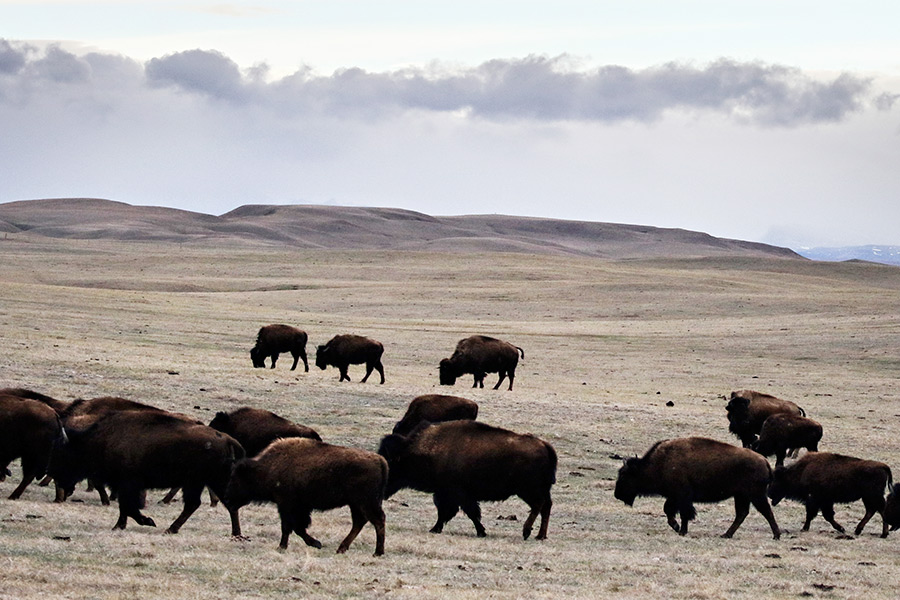WASHINGTON — The bison could soon become the national mammal of the United States.
Legislation approved by Congress would elevate the bison to a stature approaching that of the bald eagle, long the national emblem. There has not been an official mammal of the United States.
The Senate gave final approval to the bill Thursday, two days after the House approved it. It now goes to the president’s desk.
Lawmakers called the bison — North America’s largest land animal — the embodiment of American strength and resilience and said it reflects the nation’s pioneer spirit.
“The bison has been an important part of our culture for many generations, especially in New Mexico, across the West and in Indian Country,” said Sen. Martin Heinrich, D-N.M. “Recognition of our new national mammal will bring a new source of pride for Americans — just like the bald eagle” and bring greater attention to ongoing species recovery efforts, he said.
Supporters said the bison legacy bill would afford overdue recognition to a species that has sweeping cultural and ecological significance. Bison already appear on two state flags —Wyoming and Kansas —and the official seal of the U.S. Department of the Interior.
“No other indigenous species tells America’s story better than this noble creature,” said Rep. William Lacy Clay, D-Mo. “The American bison is an enduring symbol of strength, Native American culture and the boundless western wildness.”
Tens of millions of bison, also known as buffalo, once thundered across a range stretching from central Canada through the Great Plains and northern Mexico. After a century-long slaughter driven by commercial hunting for buffalo pelts, the population dwindled to a thousand or fewer by the late 1800s. Now about 30,000 wild bison roam the country, with the largest population in Yellowstone National Park.
Bison also are scattered in public, tribal and private lands in the U.S. and Canada. A much larger number — more than 300,000 animals — are in commercial herds. Many of those are “beefalo,” cattle-bison hybrids raised for their meat.
The push to give bison special recognition began about five years ago. That’s when Native Americans on the InterTribal Buffalo Council joined with conservation groups to advocate for a “National Bison Day” in early November, to raise awareness of the animal’s essential role in providing food, shelter and clothing for many Native American groups prior to European settlement.
Bison, known as “tatanka” to some tribes, are central to creation stories that say people were living beneath the earth’s surface “and the buffalo said come up here and we will provide for you,” said Jim Stone of the South Dakota-based council.
“Man and buffalo were put on this earth for a purpose and that purpose wasn’t to be separate species. It was also to be intertwined,” Stone said
Efforts to introduce wild bison into new areas have met resistance from Western ranchers concerned about animal disease and new competition for limited grazing space. Language added to the bison bill in the House bars the government from altering or changing policies because of the animal’s newly-elevated status.
Wildlife advocates nevertheless were hopeful that the new designation will bolster efforts to restore herds on large patches of land where they once roamed. “We would like all of our children to be able to see a herd of several thousand bison roaming freely across some of these areas. That is really the vison of what the American West was and could be,” said Cristian Samper, president of the New York-based Wildlife Conservation Society.
The conservation group operates the Bronx Zoo, which played a key role in staving off bison’s extinction by providing animals that became the nucleus of new herds a century ago.
